For artist/writers such as Frank Miller, David Mazzucchelli, and David Lapham, telling a good story is the most important thing. The same holds true for this column’s subject, Earl Geier in his fanzine, Bald Ego.
Bald Ego number 2, April 1981
Earl Geier, Publisher, Editor and contributor
Earl Geier came into view for me first in David Heath Jr.’s fanzine, No Sex. I was taken with his simple but effective storytelling and art. Not flashy, Geier wrote interesting stories, and his sequential work served those stories very well. Like some of the best writers, Geier puts ordinary people in extraordinary circumstances. “I can remember reading 1950’s science fiction, which had a lot of stories where the common plumber or electrician would end up saving the universe, and I always wondered about the other people in the world, who were just swept up in the events. I remember the Archie Goodwin/Alex Toth story in Blazing Combat #3 left a big impression, with its desolate post-armageddon atmosphere. Some people see a glass of water as half full. I see it as half empty, with stuff floating in it, and a chip on the glass lip where I’ll probably cut myself.” Geier decided to self-publish his work because, in his words, “I killed three magazines,” and had “failed in my attempts to find a paying market for my artwork.” These magazines include Paper Cuts, Dragon’s Teeth (which coincidentally, intended to bump a story by Alex Toth for one by Geier), and Whispers and Shadows. While supporting himself by doing work for the role playing game market, Geier has also had jobs as a security guard, a teacher, and more. Geier did get some work in professional comics, but that seemed doomed as well, with companies such as Now and Innovation folding, and work at First not coming to fruition.
Earl Geier’s work first appeared in Robert Weinberg’s 5th anniversary Weird Tales tribute (see a webpage listing the content here), alongside such greats as Roy Krenkel, Frank Frazetta, and Tim Kirk. He went on to be in fanzines such as Ewigkiet (which I have an issue of and will review at a later date), the aforementioned No Sex, and Larry Davidson’s Potboiler. But it was in his own Bald Ego that he was really able to take flight (literally, as you can see from the cover above). Though, as I said, Geier’s visuals are not flashy, they are well constructed and well thought out. If you examine the construction of the cover to the second issue, you could argue that the direction of the kite points to the windows, which angle back downward to the center of the picture, and that direction is reinforced by the curtain being blown out one window towards the precariously balanced protagonist’s leg, which then brings you back up the other character to the kite, establishing an enclosed circular flow. Guiding the viewer’s eye, whether by purpose or intuition, is the mark of a thinking and self-aware artist. Geier, in his usual depreciating manner, calls it “instink” and goes further in saying,
I suppose there might be some artists who carefully plan out a picture, and manage to make it look natural. I can’t say I believe that works. Personally I don’t plan things out: you sketch out the picture and go ‘hmm, that looks boring, what can I do with it?’ You add things (or take away things), move things until it ‘looks right.’ The best artists make it look ‘right’ (and ‘better’) regularly, and more often than the rest of us. And, of course, time enters into it. Sometimes you have to say ‘good enough’ (or ‘good as I can do it right now’) and move on. On the cover I was just trying to add touches to make it look good.
The cover references the third story in this issue, but let’s save the examination of that story since Geier treats his issues as sort of a musical concert with multiple bands. There is a warm up band, maybe even two, leading up to the main attraction, and this particular story makes a great headliner, as you will see. For now, we can take a look at the first story, which is called “Listen to the Silence.” This story involves a future where the more evolved among the society have learned to communicate via ESP, becoming what is known as “esps.” Not everyone is adept enough, and these people, called “norms,” end up in internment camps. Geier shows us the mental communication by using a different balloon treatment…actually no balloon at all, as well as text of the esps being a typewriter typeface (and on a real typewriter probably, since this was before we all had home computers), rather than hand lettered. To be honest, lettering is not Geier’s strong point, but it shows that the artist/writer is continually trying new techniques to serve the story.
Geier comes up with several interesting moments, one of which is a scene where the reader learns of the difficulty of the esps to ‘keep up’ with the speed of one character’s verbal communication. One Esp says that “oral was my worst subject in school.” This whole conceit could make for a long novel, but Geier only has so much space, so the story is told in nine pages. By and large Geier continues to come up with interesting and original ideas throughout his work, while keeping his art in service to the story. Gilbert Hernandez was an early admirer of Geier, stating that the artist/writer was one that “I really liked in No Sex. Looking back, he had a very pleasant Jesse Marsh approach to drawing and pacing his stories.” Jesse Marsh was an artist who did a lot of work for Dell in the 50s and 60s, primarily Tarzan, and was admired by many, including Richard Corben. I liken Geier more to someone like Sam Glanzman, an artist (and writer) who did a lot of war related work for DC (such as The Haunted Tank), in addition to Charlton and Dell. See a Jesse Marsh site here and the work of Glanzman here, along with a Glanzman interview here.
Given the title Bald Ego, you would expect it to be a showcase for Geier’s work only. But at least these first few issues have other contributors. The second story is by friends and fellow No Sex contributors David Heath Jr. and Jerry Collins, and is called “Ships.” I don’t know whether the pair was having a laugh by the various Star Trek references or not (see below), but the references are both visual and textual.
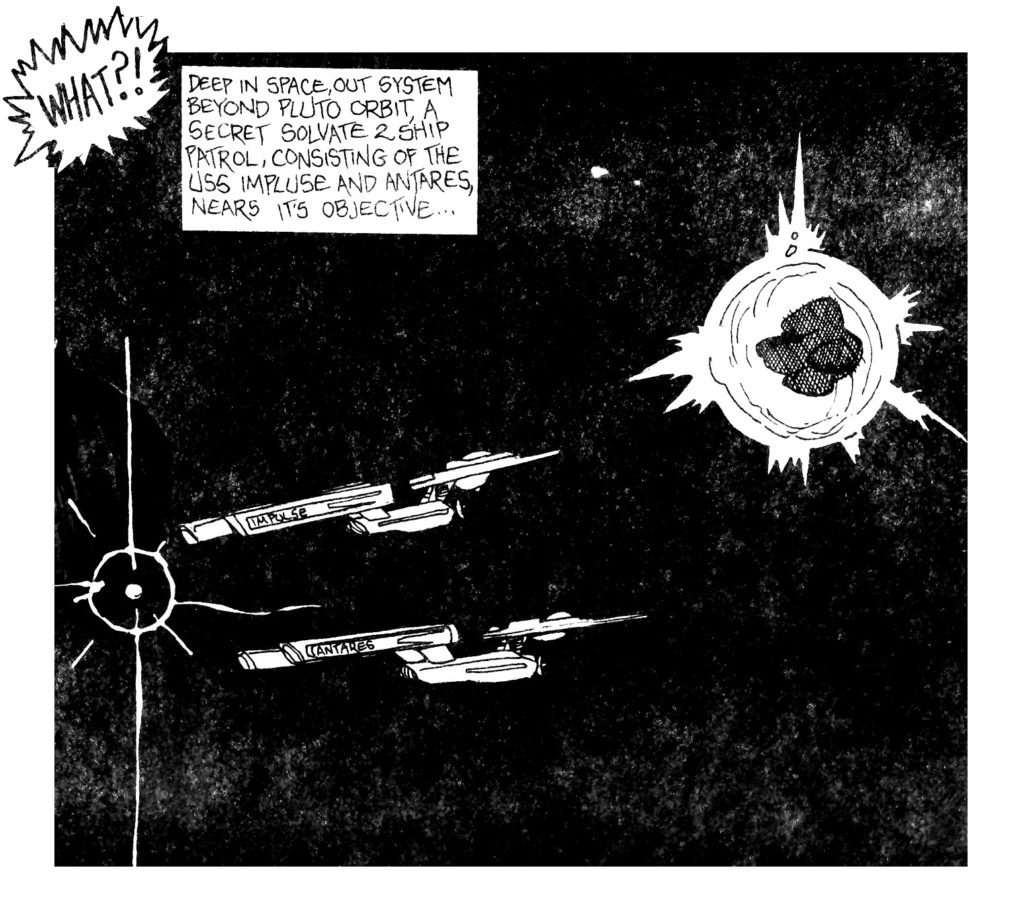 The story takes us through the history of a specific spaceship. You can tell the creators loved their subject matter, though Collins and Heath’s artwork is cartoony, sketchy, and not for everyone. If nothing else, you might have fun spotting all the aforementioned Star Trek jokes! In an editorial of sorts that follows this story, Geier calls for contributions but says, “the story must have depth! It should not just be an excuse for pretty artwork!” As you can tell from what I have said so far, Geier follows his own dictum. But now…flick your lighters (or cell phones), it’s time for the main attraction!
The story takes us through the history of a specific spaceship. You can tell the creators loved their subject matter, though Collins and Heath’s artwork is cartoony, sketchy, and not for everyone. If nothing else, you might have fun spotting all the aforementioned Star Trek jokes! In an editorial of sorts that follows this story, Geier calls for contributions but says, “the story must have depth! It should not just be an excuse for pretty artwork!” As you can tell from what I have said so far, Geier follows his own dictum. But now…flick your lighters (or cell phones), it’s time for the main attraction!
“Flying the Hollow City” was what convinced me of Earl Geier’s skills and prompted me to keep an eye out for his work. Again the story takes place in some sort of nameless future, after “the wars” and “the troubles.” Most of the adults are gone in this deserted and bombed out city. Those that were well connected or well off were able to sequester themselves in the clean tall “Towers.” Those that weren’t were left to fend for themselves or end up in the Army, the factories, or “scratchin’ in the city.” The protagonist, a teenager by the name of Gus, is in the middle of a blood feud with another young man over a girl. An old story, but one well told here. The art also, is some of the best Geier has done. In addition to using fewer panels on a page than usual, he showcases his adept handling of blacks and zip-a-tone to heighten mood, establish perspective, and guide the viewer’s eye, as seen below (lettering by Carole Cheval).
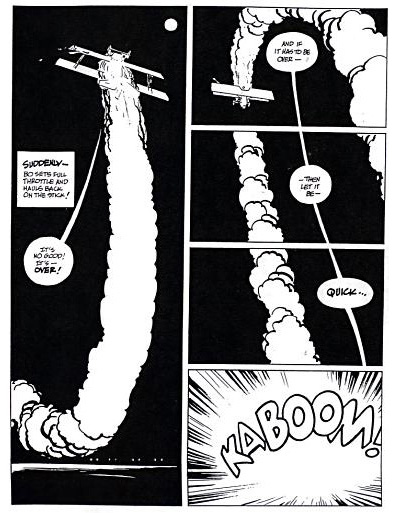 The innovative twist in this story is the use of hangliders as not only a thrill ride, but a method of transportation. Gus and his nemesis Vince decide to duel for the girl and their pride in a deadly flying battle. The canyons created by the deserted buildings supply the needed airflow. Though I will not go so far as to equate Geier with Alex Toth (the master of all things sequential), the glider duel reminded me of Toth’s benchmark “Bravo for Adventure,” specifically the page to the left. See more of the incredible work of Alex Toth on the official site here. Alex Toth is an inspiration to many comic artists of course, most notably Steve Rude.
The innovative twist in this story is the use of hangliders as not only a thrill ride, but a method of transportation. Gus and his nemesis Vince decide to duel for the girl and their pride in a deadly flying battle. The canyons created by the deserted buildings supply the needed airflow. Though I will not go so far as to equate Geier with Alex Toth (the master of all things sequential), the glider duel reminded me of Toth’s benchmark “Bravo for Adventure,” specifically the page to the left. See more of the incredible work of Alex Toth on the official site here. Alex Toth is an inspiration to many comic artists of course, most notably Steve Rude.
Below you will see two sequences from the air fight in Geier’s story.
I don’t know about you, but I almost get vertigo from just seeing those two sequences!
Issue two is rounded out by two full-page illustrations by Geier and a back cover by David Heath Jr. Geier was kind enough to let me scan and post the pdf of issue two, even though he is actually still selling this and other issues. In addition to downloading the pdf, please go to his site and check out the other work he has for sale.
Issue one of the new volume of Bald Ego has a story (“Cold Steerage”) you might have seen in the previous No Sex column, but the other issues should be all new to you. In addition to a portfolio, Geier has five more issues of Bald Ego (starting at Vol. 2, Number 1). After the first issue, Geier tried to tie stories together to form a theme each issue, with issue two being a “Special Crime Issue,” while three focused on horror, four on science fiction, while five is composed of one long 31-page story. Geier takes on many interesting topics and tries his hand at several experimental story techniques, including one story being primarily in a made up language. If you like creators like Mazzucchelli and Lapham, I think you will enjoy Geier’s work. Please show your support and approval of someone who is interested in, above all, telling a damn good story!
My sincere thanks to Earl Geier for all his help in writing this column. Check out his site here. Also thanks to Jaime Hernandez. Again, download the pdf here. Be here in two weeks, because I am doing an all-star zine…Infinity issue 5! Neal Adams, Richard Corben, Mike Kaluta, Vaughn Bode, Berni Wrightson, Al Williamson, and more!
Ken Meyer Jr.
kenmeyerjr@yahoo.com


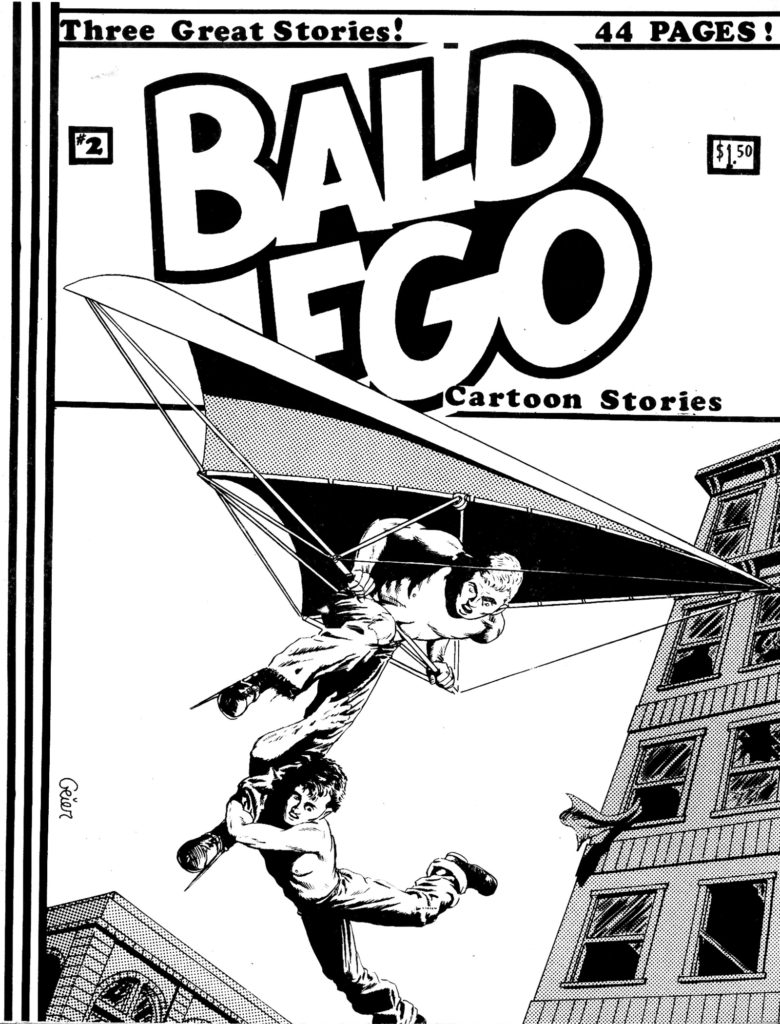

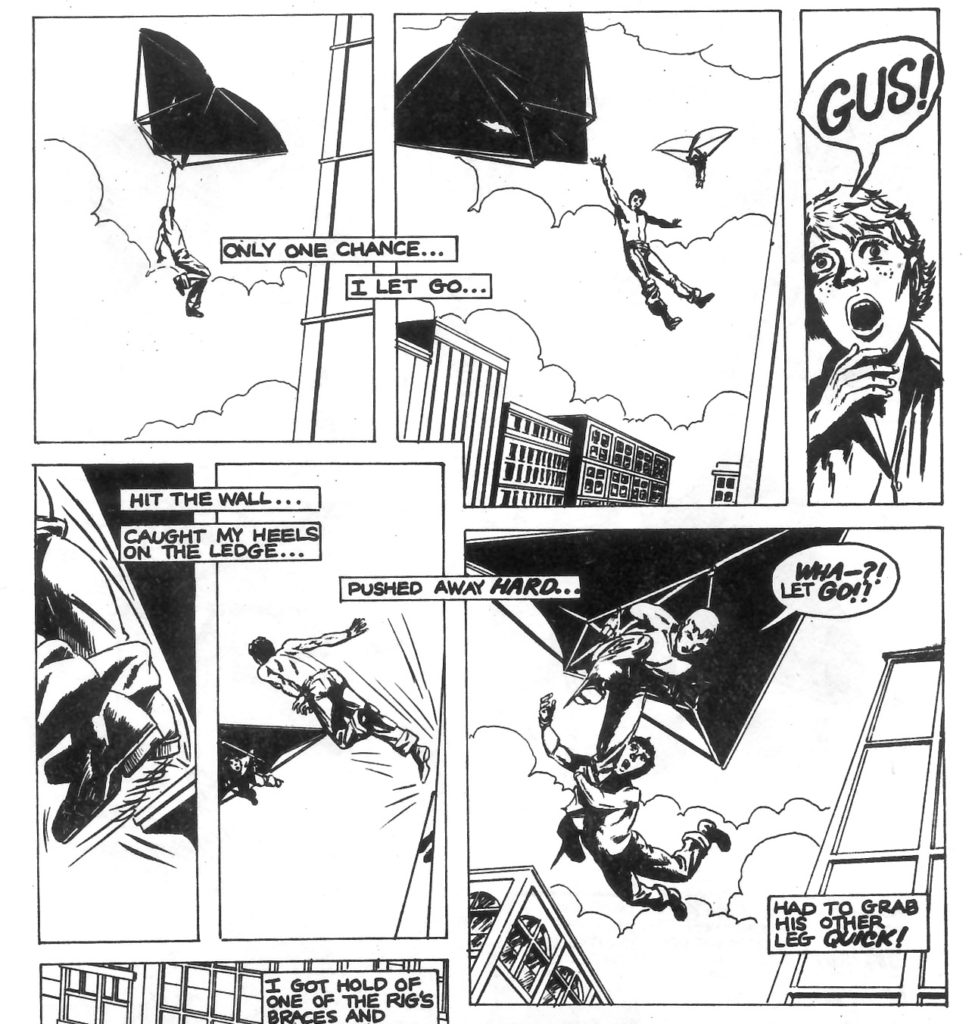
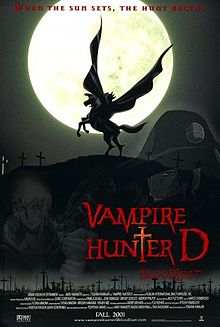
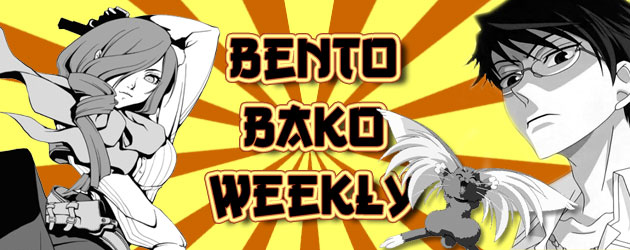
So Geier started out not only as a comic artist but a teacher and an RPG artist as well? Where does that sound familiar…?
Well, not with me! I am only NOW getting around to hopefully being a teacher. But Earl definitely deserves a bigger audience.
Ken, both your PDF links are causing errors. They’re bringing up 404 errors. 🙁
will check and fix right away!
OK, sorry…I had uploaded a different issue of BE earlier, so I had forgotten to upload number two. The other link I have since found out, is out of date, so I changed it so both should work now!
Hangliding as a method of getting chicks? Count me out. lol. Good article Ken.
You must not be as desperate as some of us, Billy.
I would love to get my hands on a copy of Potboiler #1, or any early fanzines that have pre-Love and Rockets Jaime Hernandez material. Can anybody out there point me in the right direction? One of my prize possessions is a copy of NoSex #18, which has an early Penny Century story. I bought it off David Heath around 1990 some time. At that time I was trying to find a publisher for my Strange Attractors comic, which started off as a total rip-off of Jaime’s early work.
Thanks,
Michael
Pingback: Ink Stains 80: No Sex 13 – ComicAttack.net